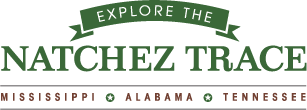This area is a trailhead for horseback riders and hikers. It’s one of the nicest stopping places along the Natchez Trace Parkway. During the summer months, there are people using […]
Attractions
Natchez Trace Parkway Bridge
Natchez Trace Parkway Bridge
The Natchez Trace Parkway Bridge is the nation’s first segmentally constructed concrete arch bridge.
Warner Parks
Warner Parks
The Warner Parks are the largest municipally administered parks in Tennessee and together span 2684 acres of forest and field, 9 miles from downtown Nashville.
Centennial Park
Centennial Park
Centennial Park is Nashville’s premier park.
The Parthenon
The Parthenon
The Parthenon stands proudly as the centerpiece of Centennial Park, Nashville’s premier urban park.
Fort Negley
Fort Negley
Explore Nashville’s Civil War History at Fort Negley.
Nashville City Cemetery
Nashville City Cemetery
Opened in 1822, the City Cemetery is the oldest continuously operated public cemetery in Nashville.
Two Rivers Mansion
Two Rivers Mansion
Two Rivers, one of the earliest and best preserved of the early Italianate houses in Middle Tennessee, was part of an 1100-acre plantation located on fertile, rolling land between the Stones and Cumberland Rivers.
Fort Nashborough
Fort Nashborough
On January 1, 1780, Nashville was founded when James Robertson led his group of pioneers across the frozen Cumberland river to a place called The Cedar Bluffs. It was here that these men built a fort called Nashborough which would be shelter for the first families until Indian attacks ended in 1792.
